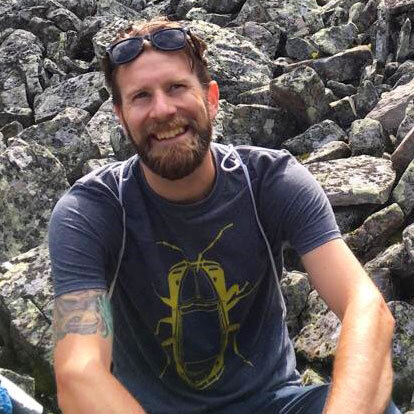City-sized holes on Antarctica's ice shelves offer tantalizing 'window' into the frozen continent's underworld
Enormous holes on Antarctica's ice shelves appear to be linked with the formation of icebergs, study reveals.

Enormous, city-size holes that open up on Antarctica's ice shelf may be linked to the formation of giant icebergs that calve off of the frozen continent, a new study has found.
These "windows into the sub-shelf environment" could offer clues about how the ice is melting deep beneath the surface, lead author Elena Savidge, a doctoral candidate in the Colorado School of Mines' Department of Geophysics, told Live Science.
Vast ice sheets cover Antarctica's landmass and flow toward the coast, while ice shelves sit above the water surrounding the continent. The biggest factors leading to ice loss are calving and the melting of the bottom layer of ice, Savidge said. As the ice shelf shrinks and thins, its ability to push back on the flow from the ice sheet diminishes, thus speeding up the rate at which the ice diminishes.
To better understand the myriad factors that contribute to calving, melt and ice loss, Savidge and colleagues turned to the skies to gather data on "polynyas" — large areas of open ocean that appear in the ice shelf. Although polynyas are linked to melting and fracturing on the ice sheets, there has been no long-term data on when and where the polynyas appear.
In a study published Nov. 21, 2023, in the journal Geophysical Research Letters, the researchers studied polynyas on Pine Island Glacier, which, according to Savidge, "is one of the most vulnerable glaciers in Antarctica."
The team used satellite data to create a 22-year dataset of polynya change along the edge of Pine Island Glacier. Here, many polynyas are formed by warm masses of ocean water that melt the ice from below. This melting creates warm, freshwater-rich plumes that sit on top of the salty ocean water and can be forced toward the surface, occasionally breaking through to create a polynya.
Get the world’s most fascinating discoveries delivered straight to your inbox.
Because it is so hard to get below the ice and see what is happening, these polynyas are useful glimpses at what is happening below. "They can be indicators of how much melt is happening," Savidge said.
They focused on polynyas at the edges of the glacier because this is where glacier and ocean dynamics meet. "These things co-evolve together, especially because ocean heat is a driver for change here," Savidge said.
Over the 22 years of data, they found huge variability in the number and size of the polynyas, with the total area covered ranging from zero to 124 square miles (322 square kilometers). The largest individual polynya was recorded in 2007 and covered an area spanning 103 square miles (269 square km). It peaked just 68 days before an iceberg measuring 275 square miles (714 square km) broke free.
It is likely that polynya formation and calving are linked processes, Savidge said, but the exact mechanisms are unclear.
The researchers also saw that polynyas occurred in the same locations over the years, but they varied in size. It is possible that sustained and localized ice-free areas near the glacier front affect its structural integrity and influence how the ice shelf cracks under pressure from the constant flow of ice from land.
According to Savidge, the uneven size and duration of ice-free areas across the front of the glacier, "might enhance structural weakness that can contribute to calving." A large long-lasting polynya on one end of the front provides less resistance against the flow of land ice compared to areas with smaller polynya, and this may cause cracking as the ice sheet moves forward at an uneven pace.
Bradley van Paridon is a Canadian freelance science journalist and podcast producer currently living in Belgium. He covers a range of topics including genetics, biology, psychedelics, parasites, and biochemistry. He loves to explore how society and science interact. Brad completed a Ph.D. studying invasive parasites and parasites that manipulate their hosts. After graduating, he began freelance science writing and podcasting. His written and audio stories have appeared in Chemistry World, Hakai, Scientific American, and Undark.



